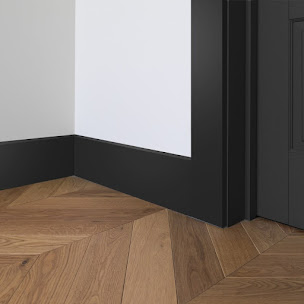A Guide to Stylish and Functional Stair Treads
Stair treads are essential for every staircase as they give stability and security to people ascending and descending. Effortlessly elegant, they provide as a visual indication to onlookers regarding the stability, safety, and appropriate use of the stairs during an emergency. It's critical to comprehend the various materials accessible and their installation techniques while replacing or renovating Stair Treads. Stairs may provide a beautiful decorative aspect to your house in addition to being functional. Creating the ideal stairway may be difficult with so many different options for architecture and materials.
First Step Material:
Metal: For extra strength and longevity, they are typically screwed into the steps rather than being glued on. They are constructed of heat-treated metal that has been filled with epoxy to prevent corrosion. Metal stair treads are becoming a more popular option for outdoor or industrial environments because of their outstanding resilience to wear, slippage, and the climate.
Rubber: Rubber stair treads are a common option for high-traffic places like hospitals as well as educational institutions due to their durability and non-slip properties.
Vinyl: Vinyl is a robust, very versatile material that can withstand extreme damage. It fulfills a functional and fashionable need. Vinyl stair treads have gained popularity in both residential and business settings due to their non-slip properties and durability.
Step 2 Styles of Stair Treads:
Selecting the appropriate stair tread is essential to improving the appearance and functionality of a staircase. It's important to take your home's decor and available space into account when selecting a stair type. U-shaped stairs work well for larger homes, while straight steps are a fantastic choice for smaller ones.
Straight steps: They go well with any architectural style and may be constructed from a range of materials. The most popular kind of stairs are straight ones, which are a fantastic choice for small homes. The easiest staircase is probably a straight one. A straight staircase has a single flight of stairs that runs continuously without changing directions. The most popular architectural type is straight stairs as they are the easiest to design and build. Due to their increased linear space requirements, they might not be compatible with every floor plan.
L-Shaped: Also referred to as quarter-turn or L-shaped staircases, 90° staircases are a close relative of straight staircases. L-shaped or quarter-turn stairs consist of two perpendicular stair flights that meet at the landing at a 90-degree angle. In contrast to straight stairs, which ascend and descend each floor in a straight line, 90° steps ultimately shift course and are usually supported by a landing platform. Quarter-turn stairs provide an attractive approach, look classic, and are simple to tuck into corners. You can use Stair Tread Covers.
U-shaped stairs: Available in a variety of materials, U-shaped stairs are often designed to complement any style of house. U-shaped stairs are a great substitute for traditional staircases in larger, more spacious homes. These consist of two opposed flights of stairs connected by a central landing. A switchback staircase consists of two parallel flights of stairs joined by a landing. The two sets of steps take distinct paths. A straight staircase lacks the visual intrigue that this design offers. one of the simplest stairs to design for a small area. Landing platforms offer places for natural resting, which can facilitate stair navigation.
Spiral stairways: Spiral staircases are a chic and striking feature that might liven up your house. Because they occupy less floor area than conventional stairs, they are a smart choice for houses with limited space. Given its tiny footprint, spiral stairs are ideal for small dwellings. They are perfect for small places because of their vibrant look and compact size. The majority of spiral staircases include a central pole that offers the required structural stability.
Step 3 Choose the Parts of Your Staircase:
Planning your staircase involves considering several things. These are handrails, balusters, and newel posts. The balusters are the gems in the crown of a staircase. But unlike your favorite ring or necklace, you'll often need more than thirty matching balusters to complete a set. Newel posts are the large, decorative posts at the beginning and end of a staircase. They not only hold the railing but may also be utilized to attach the balusters. There are several materials and design options available for new posts. Several advantages installing new Anti Slip Stair Treads may bring to your house.
Step 4 Benefits of Using Stair Treads:
If your previous stair treads were worn out or broken, new ones could offer improved traction and help avoid falls. Compared to older treads, new treads are stronger, more resilient, and better able to tolerate wear and tear and severe use. Changing the treads on your staircase might be a simple and affordable method to give it a new look. The appearance and tranquility of your house may both be enhanced by installing new stair treads, which can help lessen the noise made by foot traffic on your staircase.




Comments
Post a Comment